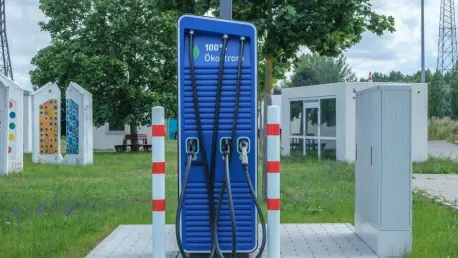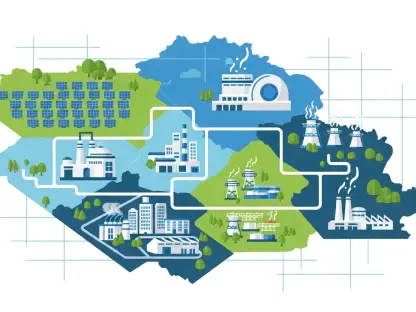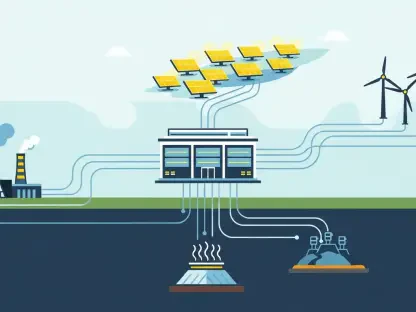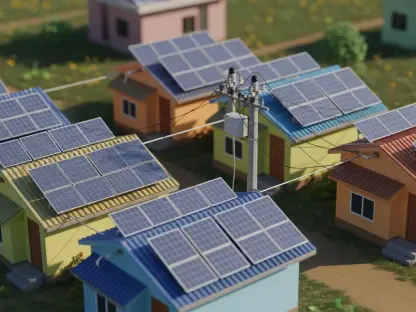The growing adoption of electric vehicles (EVs) marks an essential shift in the transportation sector. As fossil fuels wane and zero-emission alternatives rise, the demand for efficient, reliable, and accessible EV charging infrastructure increases. Traditional grid-based solutions struggle to keep pace, highlighting the need for innovative off-grid charging methods.
The Rising Demand for EV Charging
Surging Electric Vehicle Market
As internal combustion engine vehicles decline, battery electric vehicles (BEVs), plug-in hybrid electric vehicles (PHEVs), and fuel cell electric vehicles (FCEVs) experience unprecedented growth. This market shift generates a significant rise in electricity demand, which the current grid infrastructure is often unprepared to meet. The displacement of fossil fuels with electricity underscores the need for a robust and expanded grid system to accommodate this change.
This surge in EV adoption represents more than just a transformation in vehicle technology; it is a fundamental shift in energy consumption patterns. Traditional fossil fuels are being replaced by electrical energy, leading to a substantial increase in electricity demand that must be transported through an outdated and capacity-limited grid system. As more consumers switch to electric vehicles, the stress on existing grid resources intensifies, underscoring the urgency of developing alternative charging solutions to support this burgeoning market. The challenge is monumental, requiring an immediate shift towards innovative, sustainable, and widely accessible EV charging infrastructure.
Current Grid Limitations
The existing electrical grid, largely designed for centralized power generation, faces considerable challenges in adapting to the decentralized and increased electricity needs of EVs. Built around centralized coal-fired power plants, the grid is not equipped to manage the new, dispersed electricity demands created by EV charging stations. The grid’s capacity struggles and aging infrastructure further exacerbate the situation, creating a critical gap that off-grid solutions aim to bridge. Geographical constraints, coupled with the lengthy and costly process of grid expansion, add to the complexity of meeting this demand through traditional means.
Moreover, in the United States, for instance, the average time required to connect new infrastructure to the grid is nearly four years. This lag is incompatible with the rapid rate of EV adoption globally, making it clear that waiting for grid expansion alone isn’t a viable solution. Enhanced by slow bureaucratic processes and financial constraints, the inadequacies of the current grid system necessitate urgent attention. Therefore, the development and deployment of off-grid EV charging solutions become not just an alternative but a necessity to sustain the rising EV market and ensure an uninterrupted transition to electric mobility.
Exploring Off-Grid Charging Solutions
Solar Canopy Chargers
Advantages of Solar Canopy Chargers
Solar canopy chargers present a promising off-grid solution, leveraging solar power to charge EVs. One of their primary advantages is the ease of deployment. These canopies can be set up quickly in suitable locations, providing immediate charging solutions without the need for extensive infrastructure investment. Such infrastructure can quickly turn parking lots and other open spaces into charging hubs, utilizing space that might otherwise be wasted. The potential for free energy from sunlight, coupled with the ability to supplement grid power, makes solar canopies an attractive option for augmenting existing charging resources.
Moreover, solar canopy chargers contribute significantly to reducing the carbon footprint since they harness renewable energy. This solution not only meets the immediate charging needs but also aligns with broader environmental objectives by promoting clean energy usage. As climate change concerns continue to drive policy and consumer preference, the deployment of solar canopies becomes a strategic move for municipalities and private enterprises alike. Despite being a nascent technology, continued advancements could mitigate some of its existing limitations, placing it as a crucial player in the off-grid EV charging arena.
Challenges in Implementation
However, solar canopy chargers are not without their challenges. Their applicability is geographically limited, and their efficiency diminishes during nighttime or in less sunny climates. Regions with less consistent sunlight might find these systems less reliable, raising concerns about their effectiveness in providing a steady and predictable power supply for EVs. This geographic limitation also means that solar canopies cannot serve as a standalone solution but rather as part of a diversified off-grid charging strategy.
Moreover, the lower charging rates compared to other off-grid solutions make them less ideal for rapid charging needs, such as those required by commercial fleets or long-distance travelers. Their setup and maintenance costs, although lower than grid expansion, still present financial hurdles that must be addressed through innovative funding and investment models. Despite these drawbacks, their potential as a sustainable and supplementary charging option cannot be overlooked. Implementing solar canopy chargers demands a nuanced approach – integrating them with other off-grid solutions to ensure a balanced, efficient, and reliable EV charging network.
Airborne Wind Energy (AWE) Systems
Potential of AWE Systems
Airborne Wind Energy (AWE) systems represent an innovative approach to off-grid charging. These systems capture wind energy at higher altitudes, offering a scalable and renewable energy source. The wind’s consistency at these altitudes can provide a more reliable power supply for EV charging, making AWE systems a compelling option for regions with favorable wind conditions. By tapping into high-altitude winds, AWE systems promise a continuous energy flow, less hindered by terrestrial obstructions and weather variations that might affect ground-based wind turbines. This reliability is crucial for maintaining a steady and dependable charging infrastructure.
In addition to reliability, the scalability of AWE systems presents a significant advantage. They can be deployed in various configurations to meet differing energy demands, from small, localized setups to larger, regional installations. As the technology matures, these systems could be adapted to offer more customized and flexible energy solutions, addressing specific community or organizational needs. By complementing other renewable energy sources like solar power, AWE systems enhance the overall resilience and capacity of off-grid charging networks, positioning them as a valuable addition to the EV charging ecosystem.
Developmental Hurdles
Despite their potential, AWE systems face significant initial setup costs and are still in their developmental stages. Investing in AWE technology involves substantial upfront financial commitment, given the need for specialized equipment and infrastructure. The innovations required to optimize these systems’ stability, efficiency, and scalability are still underway, entailing additional research and development expenses. This financial barrier is further compounded by the technological infancy of AWE systems, requiring rigorous testing and refinement before they can achieve widespread, reliable deployment.
Additionally, regulatory frameworks and public acceptance pose challenges. The visual and spatial impact of airborne systems could meet resistance from communities and regulatory bodies. Navigating these regulatory landscapes will be crucial in facilitating the broader adoption of AWE technologies. Despite these hurdles, the ability of AWE systems to harness a consistently powerful and renewable energy source positions them as a promising solution for future off-grid EV charging needs. Continued investment and innovation in this area could open new frontiers in sustainable energy, making significant strides toward overcoming current development limitations and realizing their full potential.
Hydrogen Fuel Cell and Generator Charging
Advantages of Hydrogen Fuel Cells
Hydrogen fuel cell and generator-based charging stations provide high charging rates and consistent performance. Given a reliable hydrogen supply, these stations can support continuous charging needs, making them suitable for areas with substantial EV adoption. The inherent efficiency and rapid refueling capability of hydrogen fuel cells position them as ideal for high-demand scenarios, such as commercial fleet operations or busy urban centers where charging turnover is critical. Unlike other renewable energy sources that can be intermittent, hydrogen fuel cells offer persistent and dependable charging, ensuring EV users have uninterrupted power access.
Moreover, hydrogen fuel cells do not rely on traditional electrical grids, making them highly adaptable to various locations and infrastructure constraints. This flexibility can be particularly advantageous in remote or underserved areas where grid expansion is impractical. By leveraging hydrogen, these charging stations provide an alternative to fossil fuels, contributing to the reduction of greenhouse gas emissions and fostering the transition toward cleaner, more sustainable energy sources. Their ability to integrate seamlessly with other renewable energy systems further underscores their role in a diversified, resilient EV charging strategy.
Environmental and Financial Considerations
For hydrogen fuel cells to be environmentally sustainable, they must utilize “green” hydrogen, produced using renewable energy sources. The transition to green hydrogen, coupled with high deployment costs, presents significant challenges. Producing green hydrogen involves energy-intensive processes that must be balanced against their environmental benefits, and current production methods remain cost-prohibitive compared to conventional fuels. Moreover, the infrastructure for producing, storing, and distributing hydrogen is still developing, necessitating significant investments in technology and logistics to scale efficiently.
Additionally, while efficient in terms of energy conversion and emission reduction, hydrogen fuel cells are often less energy-efficient compared to other renewable energy sources like solar or wind power. This discrepancy raises concerns about their long-term sustainability and cost-effectiveness. Addressing these challenges will require coordinated efforts across various industries, substantial funding, and supportive policies to foster the necessary technological advancements. Despite these hurdles, the potential of hydrogen fuel cells to offer reliable and high-performance off-grid charging solutions remains pivotal in driving the future EV infrastructure landscape. As technology progresses and costs decrease, hydrogen fuel cells could play an instrumental role in achieving an environmentally sustainable and economically viable EV charging network.
Market and Infrastructure Context
Pressure on Grid Expansion
The increasing demand for EVs exerts immense pressure on existing grid access. Expanding the grid infrastructure to accommodate this demand is both slow and costly. In the United States, connecting to the grid can take nearly four years, which is insufficient to meet the rapid growth in EV adoption. This delay in grid expansion is problematic, underscoring the need for immediate and viable off-grid solutions to bridge the gap between current capabilities and future demands. The complexities of grid expansion, from regulatory approvals to the physical build-out of infrastructure, magnify these challenges.
Furthermore, the costs associated with upgrading and expanding the grid are substantial. Investments required for modernizing the grid can be prohibitively high, posing significant financial constraints for utility companies and public agencies. This scenario hampers the ability to scale up EV charging infrastructure quickly and efficiently. As the EV market continues to grow, these grid limitations highlight the necessity for innovative, off-grid charging solutions that can be deployed more rapidly and with greater cost-effectiveness. The strategic integration of these off-grid methods can supplement traditional grid infrastructure and provide a more robust and adaptable charging network.
Forecasting Off-Grid Market Growth
IDTechEx forecasts suggest that the off-grid EV charging market will surpass $16 billion by 2034. This projection underscores the critical role off-grid solutions will play in the future of EV charging infrastructure. With the anticipated increase in EV adoption, off-grid charging methods will become integral to ensuring accessible, reliable, and sustainable charging options. The expected market growth reflects the urgent need for innovation and investment in off-grid technologies as part of a comprehensive strategy to support the EV industry’s expansion.
Continued investments, both public and private, will be essential to overcome the financial and technological barriers to these innovations. Governments, private investors, and industry stakeholders must collaborate to fund research, development, and deployment of off-grid charging solutions. This funding will drive technological advancements, reduce costs, and enhance the efficiency and feasibility of off-grid systems. As these solutions evolve, they will play a vital role in mitigating the strain on traditional grid infrastructure, providing flexible and resilient charging options that can adapt to diverse geographic and operational needs. The outlook for the off-grid EV charging market is promising, indicating a significant shift towards innovative and sustainable energy solutions that can meet the growing demands of the transportation sector.
Innovating for the Future
Necessity for Multi-Faceted Solutions
The future of off-grid EV charging is not reliant on a single technology but rather a combination of diverse methods tailored to specific needs and geographical conditions. Each solution—from solar canopy chargers and AWE systems to hydrogen fuel cells—offers unique advantages that, when strategically deployed, can collectively address the overarching demand. This multi-faceted approach ensures resilience and flexibility in the charging network, accommodating various scenarios and regional requirements.
By integrating multiple off-grid solutions, the EV charging infrastructure can better manage fluctuations in energy availability and demand. For instance, solar canopy chargers can provide daytime energy, while hydrogen fuel cells ensure continuous power availability. Similarly, AWE systems can capitalize on wind energy in suitable locations, further diversifying the energy mix. This holistic approach not only enhances the reliability and performance of the charging infrastructure but also reduces dependence on any single energy source, promoting a more sustainable and robust energy ecosystem. The integration of these diverse technologies will be key to building a resilient and effective off-grid EV charging network.
Strategic Investments and Innovations
The widespread adoption of electric vehicles (EVs) signifies a critical transformation in the transportation sector. As the reliance on fossil fuels diminishes and the shift towards zero-emission alternatives gains momentum, the demand for efficient, reliable, and easily accessible EV charging infrastructure is growing rapidly. However, traditional grid-based charging solutions are often struggling to keep up with this increasing demand, highlighting a pressing need for innovative off-grid charging methods.
These off-grid solutions can provide a more flexible and resilient charging network, especially in areas where traditional grid infrastructure might be weak or unavailable. By integrating renewable energy sources such as solar and wind, along with advanced battery storage systems, these off-grid charging stations can operate independently of the conventional power grid. This not only ensures a continuous and clean energy supply for EV users but also adds an extra layer of reliability and sustainability to the overall EV ecosystem.
Moreover, off-grid charging systems can be particularly beneficial in remote and rural areas, where constructing new grid infrastructure can be both challenging and costly. These systems can also serve as critical support during emergencies when the primary grid might be compromised. The growing demand for EVs and the subsequent need for a robust charging infrastructure presents an opportunity to rethink and innovate beyond traditional solutions, paving the way for a sustainable, zero-emission future.









